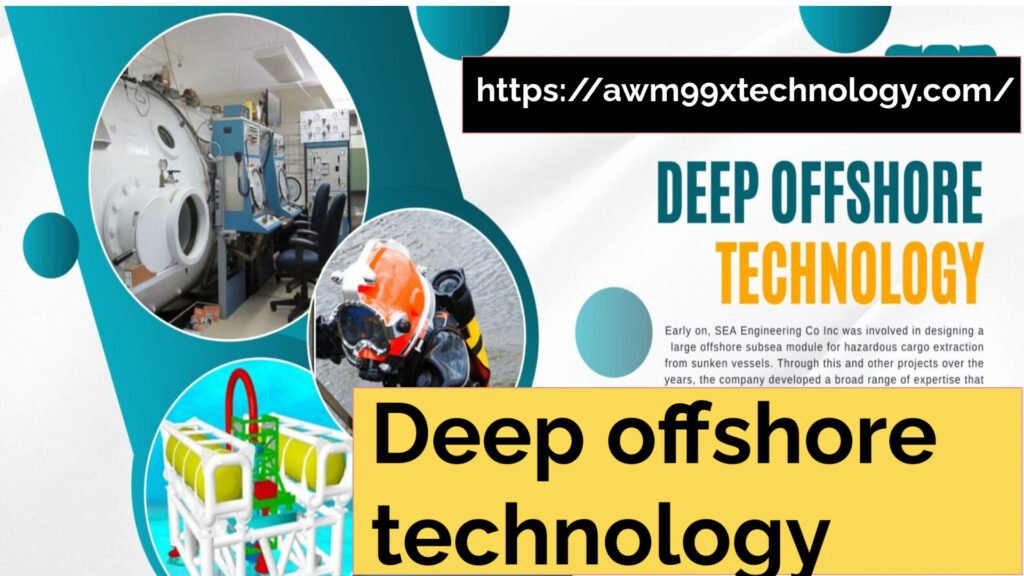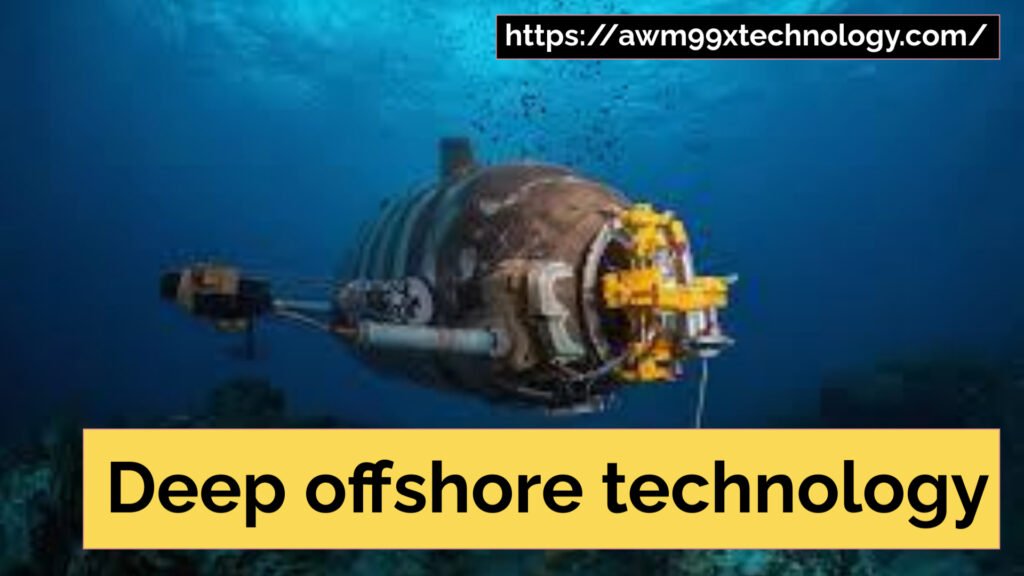Introduction
Deep offshore technology is fundamental and serves the purposes of marine engineering that requires the search and recovery of features or commodities from great depths of the ocean. Such systems and technologies are developed and integrated in marine engineering to facilitate various operations in harsh environmental conditions such as high pressure, saltwater, and low or high temperatures. Development of offshore equipment also brings significant improvements in task safety and efficiency. These developments are important for industry professionals, investors or any other person who is involved in maritime resources development.

Key Points:
Technology, depth, and operational capacity are crucial for effective resource extraction and marine engineering. These factors enhance efficiency and safety in challenging underwater environments.
New advancements include high-end diving systems and underwater breathing apparatuses. These improvements have enhanced operational efficiency and capabilities.
These systems have been firmed in real life scenarios including in increasing number of oil and gas exploration as well as renewable energy sites
Main Content
Understanding deep offshore technology
Deep offshore technology is how deep oceans resource development practices and systems are. This technology is critical and comes in handy in marine engineering especially where the operations have to be conducted outside of the continental shelf.
Definition and Scope: It encompasses highly evolved devices and means which are capable of withstanding the strenuous pressure and harsh conditions associated with the deep seas.
Key Characteristics:This technology is highly distinct from conventional offshore systems. It addresses the logistics, technical, and operational risks associated with deepwater operations.
Innovations
Global trends are driving changes in the deep offshore sector, enabling the application of innovative technology to address longstanding challenges.
Underwater Robotics and Autonomous Vehicles: This equipment improves exploration and data collection in areas that were previously difficult or impossible to access.
Drilling Techniques and Equipment: New procedures aim to boost productivity and reduce risks in deepwater drilling for natural resources.
Applications
The deep offshore has a number of practical implementations which show its usefulness in different fields.
Oil and Gas Exploration: Specialists are more often making use of proper offshore equipment to explore for new oil and gas deposits in a more efficient way.
Renewable Energy Initiatives: Marine energy projects, such as offshore wind farms, use this technology to harness energy sustainably.
Challenges in Deep Offshore Technology
With all the advancements, there are challenges regarding deep offshore that need to be dealt with if success is to be achieved.
Environmental Concerns: Such operations can affect the local marine life. Therefore, a thorough environmental assessment is essential before starting any activities.
Technical Difficulties: Extreme conditions pose logistical hurdles and therefore, crisis preparedness measures and safety training protocols need serious enhancement.

Future Trends in Deep Offshore Technology
The industry is evolving, and new trends are likely to emerge in the future.
Political Context: Policies prioritizing environmental protection and sustainability are becoming essential in deep offshore engineering. As a result, this shift is driving demand for more eco-friendly designs.
Integration of AI and Machine Learning: These technologies are gaining attention for their potential to improve resource efficiency and predictive maintenance of the tools.
Key Players in Deep Offshore Technology
Innovations in offshore technology are spearheaded by industry players, companies, and organizations.
Leading Firms: Companies like Schlumberger and Halliburton focus on R&D for advanced diving systems and cutting-edge technologies. As a result, they are driving innovation in offshore operations.
Collaborations: Linkages between companies and research organizations are driving the innovation and adoption of the most effective practices.
Growth of Offshore Energy Production Over Time
| Year | Oil & Gas Production (Million Barrels per Day) | Offshore Wind Energy (Gigawatts) | Tidal Energy (Megawatts) |
|---|---|---|---|
| 1990 | 25 | 0 | 0 |
| 2000 | 30 | 0.5 | 0 |
| 2010 | 35 | 3 | 50 |
| 2020 | 40 | 40 | 150 |
| 2030 (Projected) | 45 | 100 | 500 |
Regulatory and Safety Standards
The development of regulations is very crucial in terms of enhancement of safety and sustainability of deep offshore works.
Safety Standards: The law sets design requirements for equipment, outlines operator actions during operations, and mandates an environmental impact assessment. This ensures safety and environmental compliance.
Recent Changes: Advances in technology and previous accidents have contributed to advancements in safety regulations.
Economic Impact
The economic effects of offshore technology are quite significant affecting both local and international markets.
Employment: This sector creates jobs that enhance local economies, especially in coastal areas.
Source of Energy: Extracting resources from deep offshore locations significantly impacts global energy rates and trends. This, in turn, shapes markets worldwide.

Research and Development
There is a certain need for R&D work relating to the deep offshore technology in order to enhance the advancement of the industry and solve existing problems.
Research institutions: Knowledge at universities and competent research organizations is indispensable for presenting new products to the market.
Investment Trends: The growing interest of investors in promising yet straightforward projects should stimulate the industry’s expansion and transformation.
Key Features of Environmental Sustainability
It is impossible to discuss offshore technology without also mentioning the positive environmental impacts. Therefore, legislation plays a crucial role in ensuring sustainability.
Ecological Footprint: We place greater emphasis on applying safety measures and establishing operational procedures to minimize environmental harm during operations.
Environmental Solutions: Modern technology allows for efficient and proven methods of extraction while conserving the marine environment and its ecosystems.
Community Engagement and Stakeholder Involvement
Engaging local people and other stakeholders is a key requirement for effective implementation of deep offshore projects.
Community Benefits: When the local populations are guaranteed to benefit from the offshore operations, this can lead to better public outlook and endorsement.
Successful Initiatives: Effective stakeholder engagement produces positive outcomes, highlighting the need for communication to resonate and plans to integrate seamlessly with one another.
ALSO READ THIS BLOG : DATA ANALYTICS ARCHITECTURE GLOSSARY: ESSENTIAL TERMS YOU NEED TO KNOW
FAQs
What is deep offshore technology?
Tools, techniques and innovations that are developed for exploration and resource development from oceans at considerable depths are referred to as offshore technology. This includes drilling technology, robotics as well as environmental management, techniques, procedures and processes.

How does offshore technology impact the environment?
There are economic advantages, but these technologies also present environmental challenges. Efforts are focusing on improving safety standards and minimizing the impact of other developments.
What are the future prospects of deep offshore technology?
Deep offshore technology has a bright future given the trends with more automation, improved ecological processes with less technological impact and AI integration for greater efficiencies.
Conclusion
Innovations in marine engineering have become a key part of tackling the challenges of resource acquisition. These advancements play a crucial role in helping society meet growing demands. However, they also bring significant challenges—economic, social, and ecological—that must be addressed. To achieve future goals and improve efficiency, we need to refine our frameworks and deepen our understanding of these technologies.






